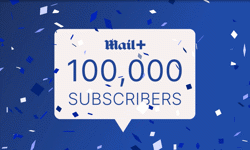Conventional wisdom holds that, ‘The customer is king’. But, in today’s competitive digital landscape, how much time do we really spend interacting directly with the customers who buy or use our products or services? Yet, by going back to basics and giving your customers what matters most to them, you are well placed for growth, even in challenging times.
Understanding user goals
We’ve all been in planning meetings where phrases like ‘innovation’ and ‘differentiation’ are touted as being sound ways to gain competitive advantage.
But how frequently is the approach to innovation or differentiation customer-focused? Sure, it seems perfectly sensible to involve our target market in the development of our products or services, yet it can be all too easy to somehow overlook this basic step. Taking the time to understand user goals takes patience and humility, but it can pay tremendous dividends. Here’s why.
Suppliers and buyers often live in different worlds. As suppliers, the only thing that matters to us is that on a particular purchase occasion the customer visits our website, engages with our brand and ultimately chooses to buy our product or service. The difference between winning a customer and not winning a customer is everything. To the customer, the world looks different. Usually a website visit is triggered by a simple need; to get the latest news, to find the highest interest savings account, to discover the quickest way to get from A to B.
In other words, the customer’s primary consideration is the category: does the website I’ve arrived at meet my need? Is the information available? At what price?
Innovation is also crucial, but far better to direct innovation at improving the delivery of the generic category benefits first, before trying to develop unique brand benefits.
Alignment
Arguably, the internet has unrivalled marketing potential compared to other media platforms, by virtue of the ability it gives us to reach a mass audience at extremely low cost. But beware the boundless nature of the medium. In the ongoing development of a digital proposition, it can be tempting to bolt on endless pieces of functionality or publish infinite quantities of content. Failing to create standards and boundaries for an online proposition can be the beginning of a slippery slope.
The basic rules of marketing alignment still hold true when it comes to building or extending a brand into the online space.
Firstly, what to make? Clearly, if we fail to align what we make to what the market wants, we’ll not be in business for long.
Secondly, how much to make? Making too little is the cardinal sin, as it means losing customers and revenue. Making too much is wasteful. Vanity publishing might be nice for the ego, but it’s not good for the bottom line.
Thirdly - and this is the area where some traditional publishers grapple most with the challenges of the internet compared to traditional publishing – distribution alignment.
If we fail to distribute what we have created, to the right people, at the right time in the most appropriate format for the medium, then we’re losing out on audience.
But, get it right, and large gains can be achieved, even in crowded markets.
Proof of concept
Since I last wrote for this magazine, about the benefit of adopting a user-centred approach to web development (Nov/Dec 2007 issue), Mirror.co.uk has undergone radical redevelopment. Following the changes, we’ve seen significant growth in audience, customer satisfaction and revenue (advertising and transactional).
During the six months to 30th June 2008, the audience of Mirror.co.uk grew 90.8% (unique users), and average dwell time increased by 38% compared to the same period in 2007. This growth was delivered by iteratively restructuring the site and improving information architecture and usability. Only when this foundation-building work was complete did we move on to the more exciting visual design reskin. The redesign builds on these sound foundations by bringing out the brand flavour; delivering personality and emotional engagement as points of differentiation.
The verdict? The redesign was hailed as innovative, fresh and groundbreaking by key media commentators:
"Look at the new Daily Mirror website that began rolling out today. It's not only a genuine departure from its former site but amounts to a totally new approach to all the newspaper sites I've ever seen...It works like a dream…" Roy Greenslade, Media Guardian (http://blogs.guardian.co.uk/greenslade/2008/07/new_mirror_website_boxes_cleve.html)
"There's more interactivity… more picture galleries and video, new blogs for writers, a more flexible format that can give different weighting and size to stories according to the news agenda and embedded video on pages." Jemima Kiss, Media Guardian (http://blogs.guardian.co.uk/digitalcontent/2008/07/and_another_one_mirrorcouk_rev.html)
How we achieved it
Our first step was to understand how ‘fit for purpose’ our current web offering was and to understand the areas for improvement.
We did this through a series of [real life] focus groups using expert external resource [Nomensa].
This customer insight allowed us to set about restructuring the site architecture so that content was aligned with customer expectation. Once we had a broad wire frame structure, we then ran a heuristic evaluation on the key page templates.
A heuristic evaluation or expert review is an effective way of finding potential hurdles early on in the website development process. The idea here was to make sure that we were adhering to W3C (www.w3.org) standards as well as benefiting from the accepted ‘wisdom of crowds’ in relation to best practice (around topics like page layout, navigation, readability and so on).
The cycle was straightforward; gain customer insight, build, test, and tweak.
The ‘tweak’ stage also involved further involvement from our customers; primarily A/B testing. This type of testing simply involves getting users to ‘test drive’ two versions of a selected page to see which one performs best against key goals. Having the discipline to keep up the user testing throughout wasn’t easy, but was essential to the success of the resulting proposition.
As part of understanding our users’ needs and goals, we were also keen to better understand what our customers think of and want from our brand in the online space. We were clear that the core brand values should be carried across, but we wanted to know exactly what our key target audiences wanted.
So we asked them. Three key themes emerged:
1. Our customers want to be involved. They want to consume, respond and discuss. We think of this three-way ‘conversation’ – or trialogue, to coin a new phrase - as an additional way of thinking about content that we publish online. To facilitate participation, where appropriate, we treat editorial content in a way which invites our customers to do so, and provide a suite of tools which make the sharing of, and the ability to contribute to our content, straightforward.
2. We learned that many of our users want to be entertained, and they want the Mirror ‘personality’ to shine through.
3. They want the ‘voice of the Mirror’ to be apparent. Not just news, but thoughtful comment and analysis from some of the star writers and columnists that they know from the newspaper.
It was the insight from our customers that meant that we were able to align our proposition with the wants and needs of our target audience. This also prevented a lot of potential resource wastage. The enormous challenge of reinventing the Mirror.co.uk proposition became much simpler by starting with the customer.
Gaining customer insight should be a continuous process; it is a practice I highly recommend.
The next, and ongoing, challenge for us is to continue extending our audience reach so that we continue to grow and gain market share. The challenge here is one of distribution alignment. We must distribute what we have created to the right people, at the right time in the most appropriate format for the medium and the consumption patterns of our prospective customers. It’s a multi-faceted and complex marketing challenge. It’s a continual work in progress but we’ve already gained some tremendously powerful insight as to where the best opportunities might be found. Where did we find these gems of insight?... you’ve guessed it – our customers.
FEATURE
Relaunching Mirror.co.uk
Hardly a day goes by without a media brand touting its latest web relaunch. Many involve little more than a change of font or background colour and are quickly forgotten. Occasionally, though, you do get a relaunch worthy of the name – a full root and branch overhaul that demands closer inspection. Mirror.co.uk’s was one. Paul Hood explains how they went about it.










